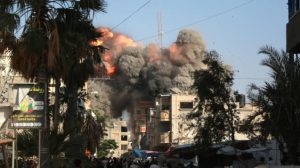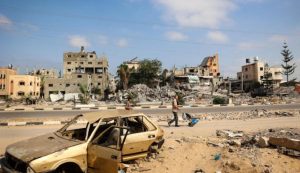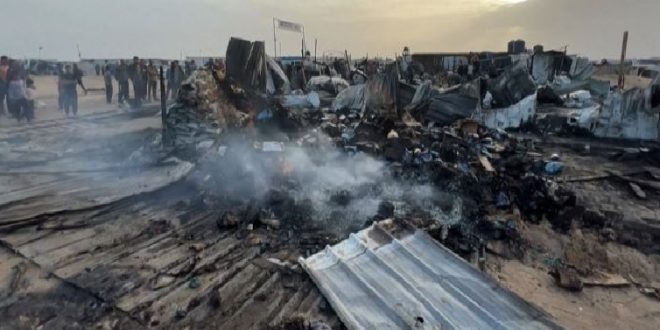05-06-2024
GAZA CITY: For the leaders of both Hamas and Israel, ending the war in Gaza has become a deadly game of survival.
The terms on which the war finally ends could largely determine their political future and their grip on power. For Hamas leader Yahya Sinwar, even his physical survival.
It’s partly why previous negotiations have failed. It’s also why the question of how to permanently end the fighting has been put off to the last stages of the plan outlined by US President Joe Biden on Friday.
 That transition between talks on a limited hostage-for-prisoner deal to discussions about a permanent ceasefire would, Biden acknowledged, be “difficult” but it’s also where the success or failure of this latest deal is likely to hinge.
That transition between talks on a limited hostage-for-prisoner deal to discussions about a permanent ceasefire would, Biden acknowledged, be “difficult” but it’s also where the success or failure of this latest deal is likely to hinge.
The US says it has submitted a draft resolution to the UN Security Council supporting the ceasefire plan outlined by President Biden. The three-phase plan involves an end to the conflict, the release of the hostages and reconstruction of the Palestinian territory.
Israel’s Prime Minister, Benjamin Netanyahu, has strong domestic reasons for wanting to take this deal step by step.
Phase one, as outlined by Biden, would see the release of dozens of hostages, both living and dead. That would be widely welcomed in a country where the failure to free all those held by Hamas is, for many, a glaring moral stain on Netanyahu’s management of the war but Hamas is unlikely to give up its most politically sensitive hostages women, wounded, elderly without some kind of guarantee that Israel won’t simply restart the war once they’re home.
Leaks, quoted by Israeli media on Monday morning, suggested that Benjamin Netanyahu has told parliamentary colleagues that Israel would be able to keep its options open.
That option, to resume fighting until Hamas is “eliminated” is, some believe, the least Netanyahu’s far-right coalition partners will demand.
Without their support, he faces the prospect of early elections and the continuation of a corruption trial.
 Netanyahu needs to keep his long-term options open, to stand a chance of winning their support for any initial hostage deal. Hamas leaders, on the other hand, are likely to want permanent ceasefire guarantees upfront.
Netanyahu needs to keep his long-term options open, to stand a chance of winning their support for any initial hostage deal. Hamas leaders, on the other hand, are likely to want permanent ceasefire guarantees upfront.
Previous deals have collapsed into this chasm. Bridging it now will depend on how much room for manoeuvre Netanyahu has with his hard-right government allies to find alternatives to the “elimination” of Hamas and how far Hamas leaders are prepared to consider them.
Netanyahu talked over the weekend about the destruction of Hamas’s “military and governing capabilities” and ensuring that the group no longer posed a threat to Israel.
Few dispute that Hamas has suffered major losses to its military infrastructure and even, some say, to its public support within Gaza and its control of the streets.
But there’s no sign that Israel has killed or captured its top leaders Yahya Sinwar and Mohammed Deif, and leaving them free in Gaza to celebrate the withdrawal of Israeli forces would spell political disaster for Israel’s embattled prime minister.
On Monday a US State Department spokesman said that although Hamas’s capabilities had “steadily degraded” in recent months, it remained a threat and the US did not believe the group could be eliminated militarily.
Meanwhile the White House said Biden had “confirmed Israel’s readiness to move forward with the terms that have now been offered to Hamas” and said the Palestinian group was now the only obstacle to a deal. (Int’l Monitoring Desk)
 Pressmediaofindia
Pressmediaofindia




